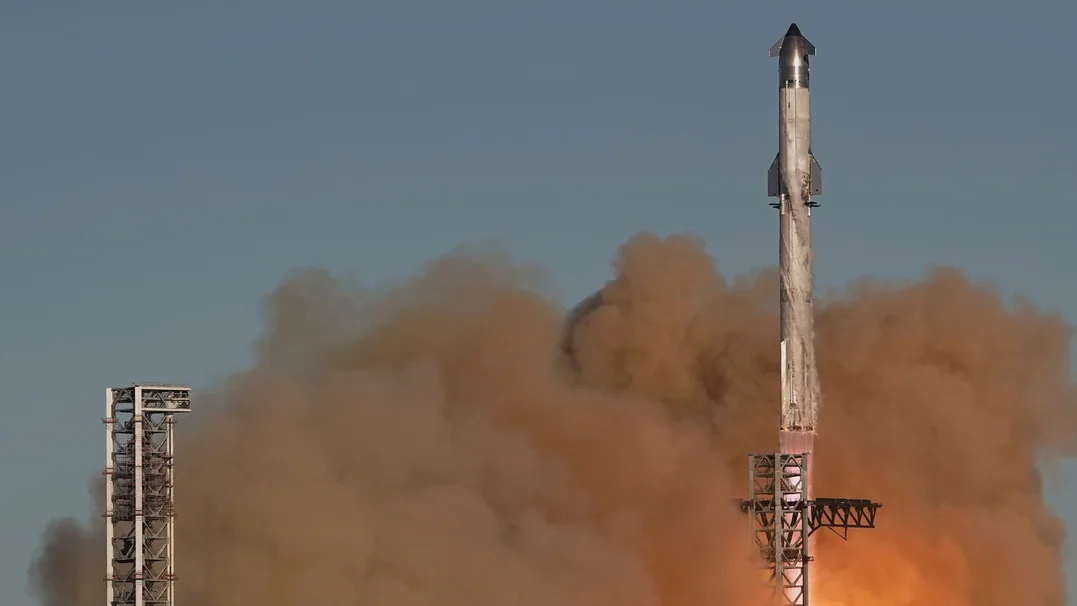SpaceX’s Starship rocket exploded just minutes into its seventh test flight, an unexpected setback after the Elon Musk-led company had made steady progress advancing the vehicle’s capabilities.
SpaceX’s mega rocket Starship launches for a test flight from Starbase in Boca Chica, Texas, Thursday.(AP)
The crash forced airline flights over the Gulf of Mexico to alter course to avoid falling debris. It was also a setback to Elon Musk’s flagship rocket programme.
SpaceX mission control lost contact with the newly upgraded Starship, carrying its first test payload of mock satellites but no crew, eight minutes after liftoff from its South Texas rocket facilities at 5:38 pm EST (2238 GMT).
What went wrong with SpaceX Starship test flight 7?
While SpaceX will investigate what exactly went wrong in due course, preliminary indications suggest that the break up of the Starship rocket was due to an oxygen leak.
The company’s CEO Elon Musk shared the update through a post on his social media platform X.
“Preliminary indication is that we had an oxygen/fuel leak in the cavity above the ship engine firewall that was large enough to build pressure in excess of the vent capacity,” he wrote in the post.
While this is an obvious setback for the company’s space programme, Musk remains hopeful of a fresh launch very soon. He also shared an update about what SpaceX would do to avoid failures like this in the future.
“Apart from obviously double-checking for leaks, we will add fire suppression to that volume and probably increase vent area. Nothing so far suggests pushing next launch past next month,” he added
The last time a Starship upper stage failed was in March last year, as it was reentering Earth’s atmosphere over the Indian Ocean.
The mission was SpaceX’s seventh Starship test since 2023 in Musk’s multibillion-dollar effort to build a rocket capable of ferrying humans and cargo to Mars, as well as deploying large batches of satellites into Earth’s orbit.
SpaceX’s test-to-failure development approach has in the past included spectacular failures as the company pushes Starship prototypes to their engineering limits. Thursday’s test failure, though, occurred in a mission phase that SpaceX has flown through previously.
The towering Falcon Super Heavy booster, meanwhile, returned to its launchpad roughly seven minutes after liftoff, as planned, slowing its descent from space by reigniting its Raptor engines as it hooked itself on giant mechanical arms fixed to a launch tower.
SHARE THIS ARTICLE ON



